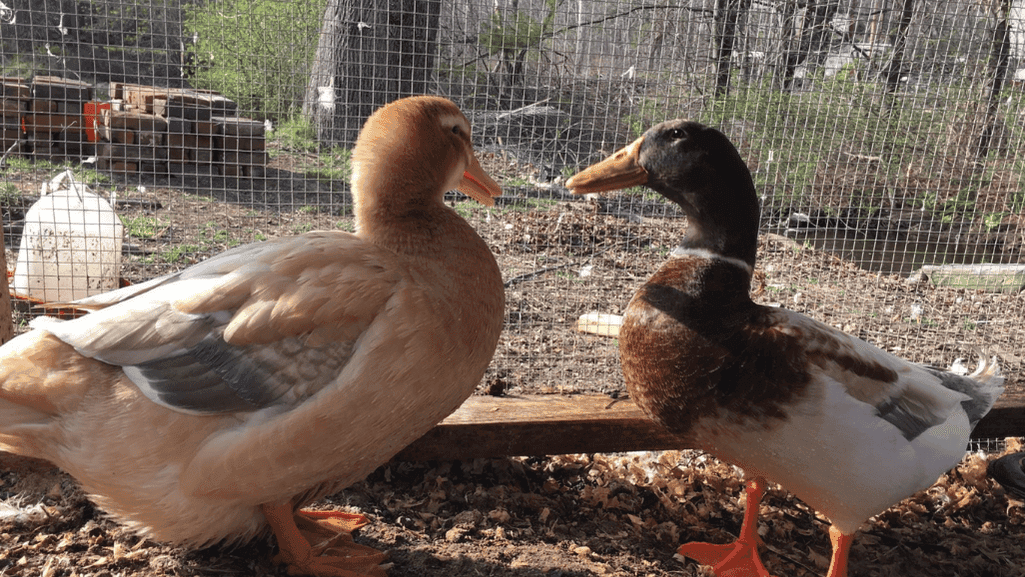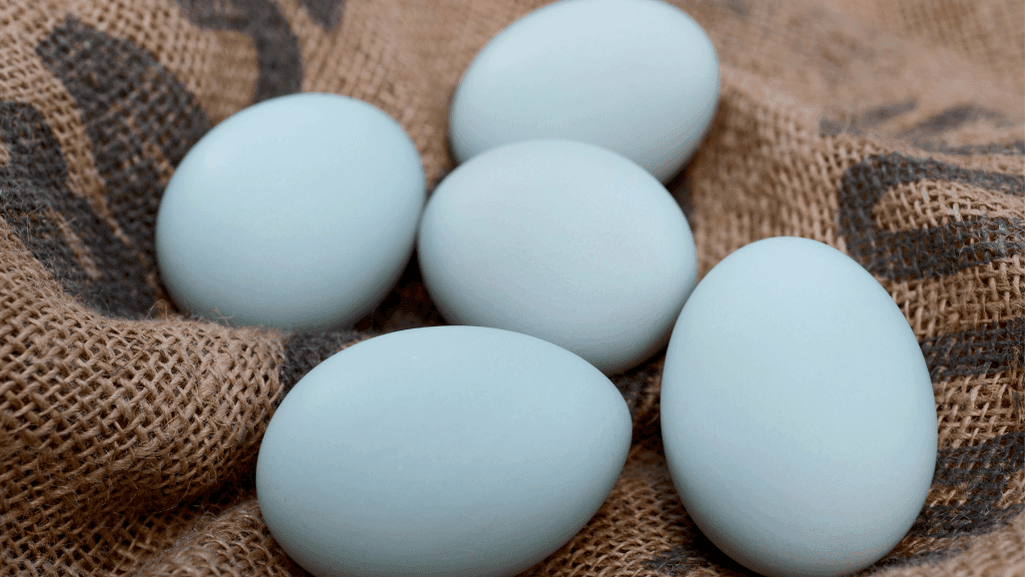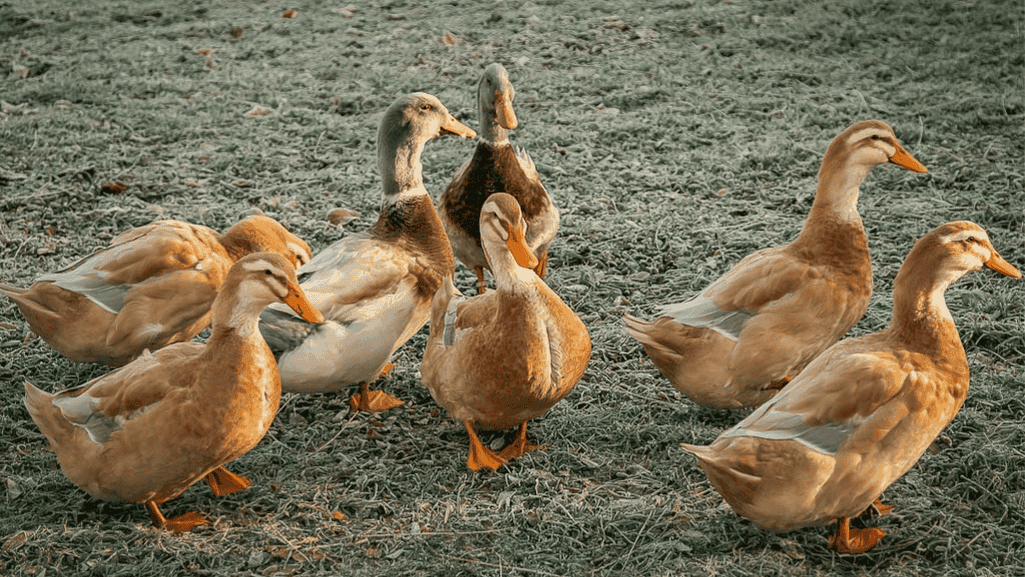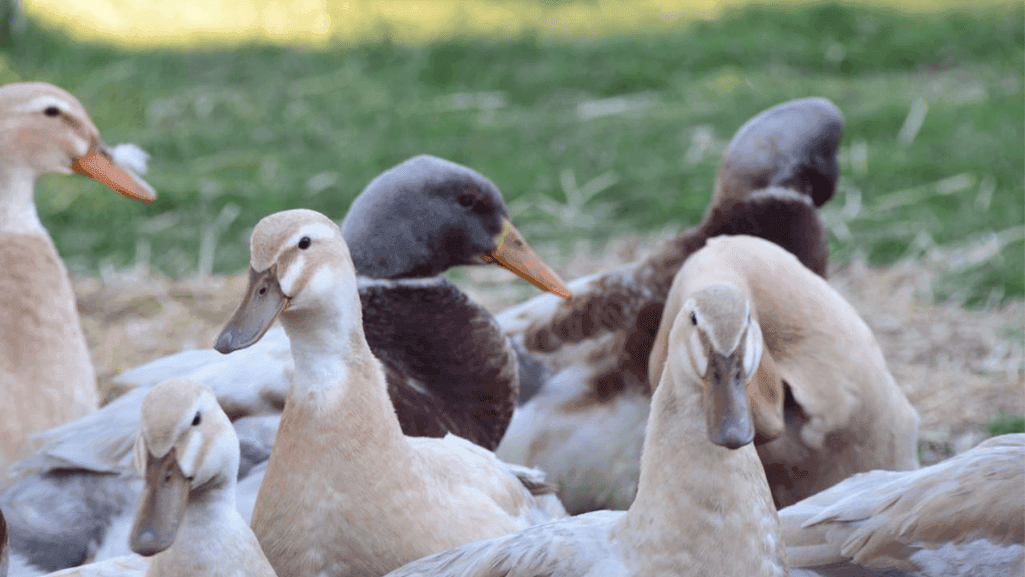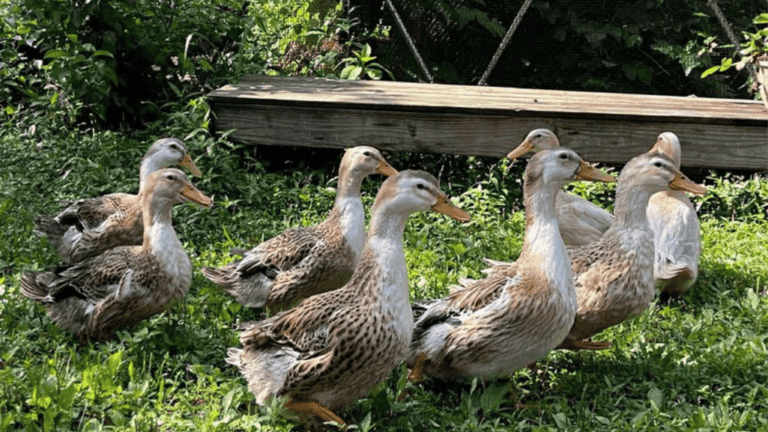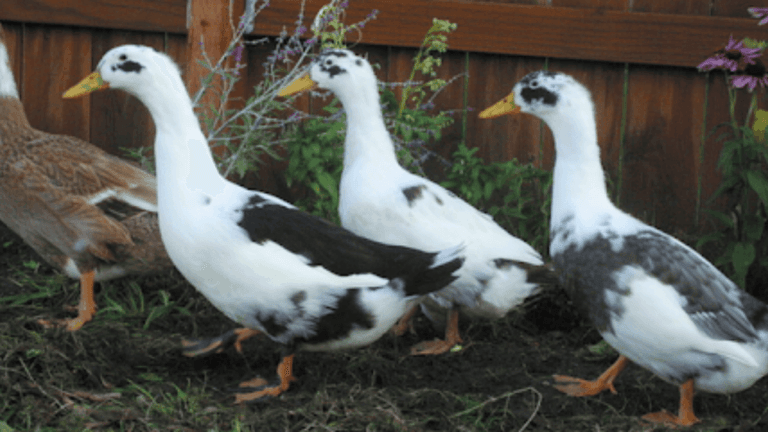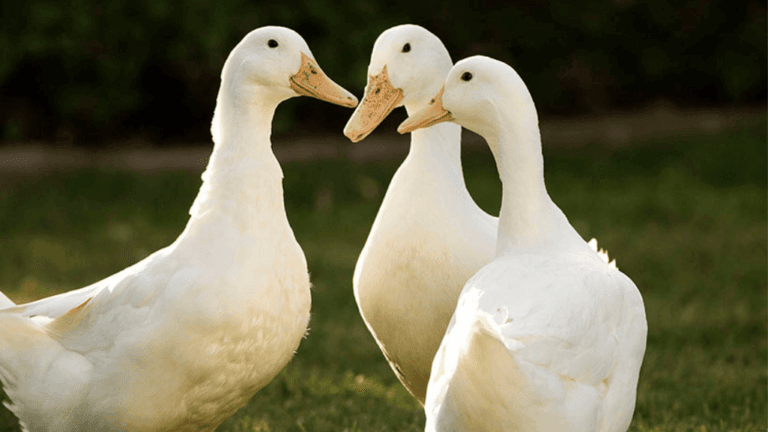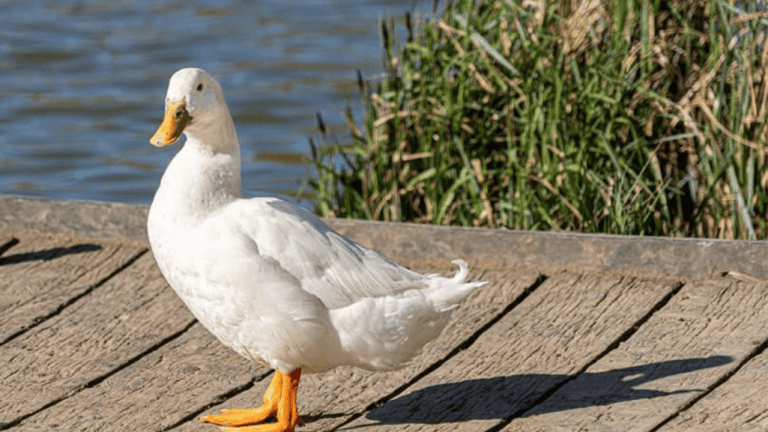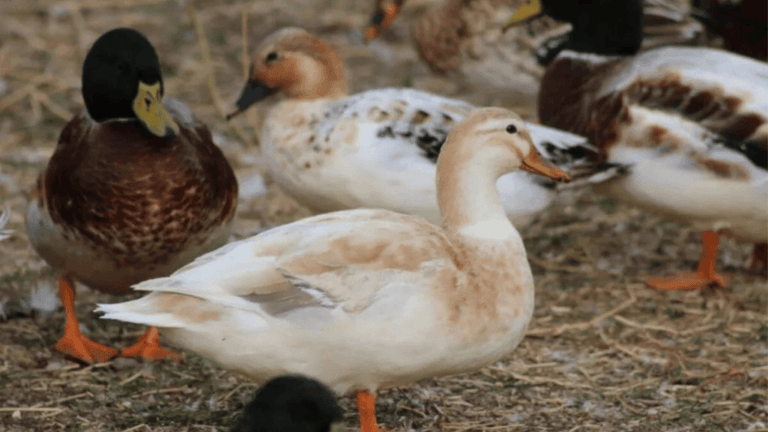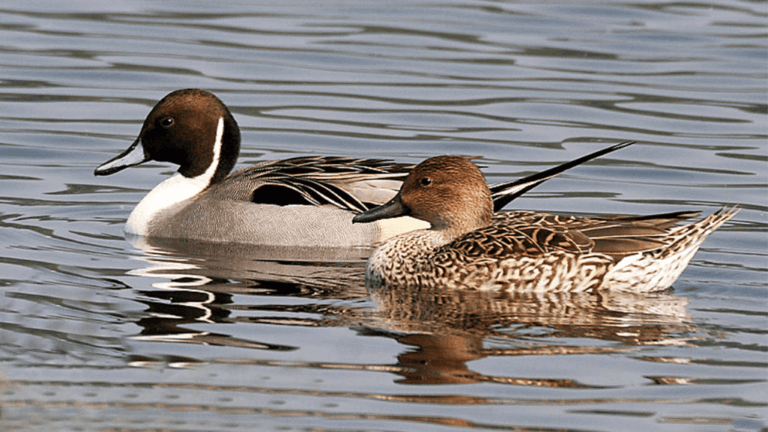Saxony Ducks are a standout among waterfowl breeds. They are elegant and versatile, loved by poultry enthusiasts and backyard flock owners. These German duck breeds have crested heads and striking colors, making them ornamental wonders. But they’re not just pretty; they’re also docile and great at laying eggs.
Coming from Saxony, Germany, these ducks have won many hearts. They bring elegance to farms and a reliable egg supply to homes. Their gentle nature and foraging skills make them a joy to raise. Plus, their egg-laying is impressive, providing a steady supply for your needs.
Key Takeaways
- Saxony Ducks are an elegant and versatile waterfowl breed originating from Germany
- Known for their crested heads and striking plumage colors, making them an ornamental delight
- Favored by farms and backyard flock owners for their docile temperament and excellent egg-laying capabilities
- Gentle nature and foraging skills make them a pleasure to raise
- Impressive egg production ensures a steady supply for households or markets
Origin and History of Saxony Ducks
The story of the Saxony duck starts in Chemnitz, East Germany. Renowned breeder Albert Franz had a dream to create a new breed. In 1930, he began a breeding program by mixing Rouen, German Pekin, and Blue Pomeranian ducks.
Development by Albert Franz in Chemnitz, East Germany
Albert Franz worked hard to breed these ducks. He wanted a breed that was both beautiful and useful. His dream came true in 1934 at the Saxony Show, where the Saxony duck was first seen.
Breeding Program and Early Recognition
World War II brought big challenges to the breeding program. Many Saxony ducks were lost. But Franz didn’t give up. He worked hard to save and improve the breed.
His efforts paid off in 1957. Germany officially recognized the Saxony duck as a distinct breed. This made it a part of poultry history.
Introduction to the United States by Dave Holderread
In 1984, Dave Holderread brought the Saxony duck to the United States. Holderread, from Holderread Waterfowl Farm in Oregon, saw the breed’s potential. He helped make it popular among American duck lovers.
Today, the Saxony duck is a symbol of Franz’s vision and Holderread’s hard work. From East Germany to the United States, it has won hearts. It shows the amazing stories of poultry and the people who create these breeds.
Physical Characteristics of Saxony Ducks
Saxony ducks are a stunning breed that many duck lovers adore. They are classified as heavy ducks, weighing between 8 to 9 pounds. Their bodies are long and broad, with a smooth chest that makes them look regal.
Despite their beauty, Saxony ducks are considered threatened. There are only a few hundred in the United States. Breeders and enthusiasts are working hard to save this breed for the future.
Size and Body Type
Saxony ducks are quite large, weighing 3 to 3.6 kg. They have a strong, long body. When they relax, they stand proudly, 10-20 degrees above horizontal.
Coloring of Hens and Drakes
The coloring of Saxony ducks is truly captivating. Hens have a yellowish to brownish-orange bill. Their head and neck are fawn-buff with creamy white stripes. Their body is fawn-buff with blue shading, and their wings are oatmeal-colored with blue, silver, and white highlights.
Drakes have a yellow to greenish-yellow bill. Their head and neck are powder-blue with a white collar. They have a claret breast frosted with white and an oatmeal-colored body that shades to creamy white. Their colors and patterns are a wonder to see, as Lisa Steele of FreshEggsDaily.com describes.
The beauty of Saxony ducks comes from a breeding program by Albert Franz in the 1930s. Franz mixed Blue Pomeranian, Rouen, and German Pekin ducks. This created a breed that is both beautiful and useful for meat and eggs.
Egg Production and Laying Habits
Saxony ducks are known for laying a lot of eggs, up to 200 or more per year. Their eggs are big and white, making them very attractive. These ducks are great for those who want a lot of eggs.
At 5-6 months old, Saxony ducks start laying eggs. They lay the most eggs between 1-2 years old. In spring, they lay eggs often. They might slow down in summer but start again in autumn.
For them to lay well, they need a diet rich in protein, about 16-18%. Calcium and vitamins A, D, and E are also key for strong eggs. They must always have clean water to digest food well.
Saxony ducks are usually tough but need a calm place to live. Stress, like predators or big changes, can hurt their egg-laying. Signs of stress include feather plucking, changes in eating, feeling tired, or being mean.
Molting season can also affect their egg-laying. During this time, they use a lot of energy and might not lay eggs. But after molting, they go back to laying lots of eggs, giving their owners plenty of fresh eggs.
Temperament and Personality Traits
Saxony ducks are loved for their wonderful temperament and fun personality. They are very calm, making them a joy to have around. As excellent foragers, they love to explore and find new things to eat.
Docile and Excellent Foragers
Saxony ducks are known for being very calm and gentle. They stay calm even when there are other animals or people around. This makes them great for living with other birds.
They are also very good at finding food like insects and slugs. This keeps them happy and healthy.
Lively, Active, and Fun-Loving
Even though they are calm, Saxony ducks are not boring. They love to move around and explore. They enjoy playing and swimming, making them fun to watch.
Female Saxony ducks quack, but males make a different sound. They make a soft, raspy noise when they’re excited. This makes them even more charming.
Saxony ducks are loved for their calm nature, great foraging skills, and fun personalities. They add joy and excitement to any place they are kept. This makes them a favorite among duck lovers.
Saxony Ducks as a Popular Choice for Farms
Saxony Ducks are becoming more popular on farms. They are versatile and can thrive in different settings. These elegant birds are perfect for any farm or homestead.
Versatile All-Purpose Breed
Saxony Ducks are loved for their adaptability. They are great for both egg production and meat quality. This makes them a valuable asset for farmers.
They are second in size only to Pekin ducks, reaching eight to nine pounds. Their size makes them a top choice for flavorful meat. They are also active foragers and gentle, making them easy to handle.
Gourmet Quality Meat and Eggs
Saxony Ducks are famous for their gourmet meat and eggs. Their meat is tender and full of flavor. It’s a favorite in many dishes.
They lay 190 to 260 white or bluish eggs a year. These eggs are not only beautiful but also delicious. They are perfect for a variety of recipes.
Choosing Saxony Ducks for your farm means you get exceptional meat and eggs. They meet the demand for gourmet products. Their versatility and productivity make them a valuable asset.
Housing and Care Requirements
To keep your Saxony ducks happy, you need to give them the right home and care. They need a big pen to move around, stretch, and act naturally. Ducklings need about 1 square foot each until they are 3 weeks old. For small groups, this means at least 5 square feet.
When they are 4-8 weeks old, they need about 3 square feet each. A minimum of 16 square feet of space is recommended. As they grow, they need more room.
At 18 weeks and older, they need at least 4 square feet each. A minimum of 24 square feet of sheltered space is best. But, to keep them healthy and happy, double this space is better. Geese need even more space because they are bigger.
Spacious Pen and Regular Free Range Time
Saxony ducks also love to explore outside. They are great foragers and enjoy finding food in nature. Giving them time to roam free helps them stay happy and healthy.
Keeping Saxony Ducks Happy and Healthy
To keep your ducks in top shape, keep their home clean and safe. Clean their pen often, change their bedding, and make sure they have fresh water. Ducks love to swim and clean themselves, so a shallow pool is a must.
Feeding them right is also important. Give them a balanced diet that fits their life stages. Good duck food, greens, and treats will help them grow strong.
By giving your Saxony ducks a big pen, time to roam, a clean home, and the right food, you’ll make them very happy. These steps are key to letting them be their natural selves and live well under your care.
Integrating Saxony Ducks with Other Poultry
Saxony ducks are known for being friendly and love to forage. They fit well into a mixed backyard flock. These ducks are big, but they get along with chickens and other ducks. Many people have kept them with chickens for years, enjoying a happy and productive flock.
It’s important to give all birds enough space and resources when mixing them. Ducks are generally healthier than chickens and lay eggs all year. They are also easy to care for. But, ducks need deeper water than chickens for bathing.
Male ducks and roosters usually don’t fight. To keep peace, have 10-12 hens for each rooster and 2 female ducks for each drake. This helps avoid fights and keeps the flock calm.
Ducks have a higher body temperature than chickens, which helps keep them healthy. While wild ducks can carry diseases, backyard ducks are not a big if you keep things clean. But, ducks can make a mess with their water and food.
Here are some tips for introducing Saxony ducklings to your flock:
- Make sure the ducklings are the same size as the other birds to avoid bullying or injuries.
- Provide separate feeding and watering stations to meet the different needs of ducks and chickens.
- Give the birds lots of space to roam and forage together, helping them bond and socialize.
- Watch the flock closely during the first few days to solve any problems quickly.
By following these tips and managing your flock well, you can successfully mix Saxony ducks with other birds. This creates a happy and productive backyard flock that’s fun to have around.
Testimonials from Saxony Duck Owners
Saxony duck owners in the United States share their joy with these charming birds. They love their lively personalities and exceptional qualities. These ducks bring happiness to farms and homes.
Lisa Steele of FreshEggsDaily.com
Lisa Steele, known for FreshEggsDaily.com, loves her Saxony ducks. She finds them lively, active, and fun. They keep her entertained with their antics.
But they’re also calm and gentle. This makes them a joy to have around. Plus, they lay delicious eggs, which is a big plus.
Holderread Farms
Holderread Farms is known for its purebred Saxony ducks. Customers love their beautiful plumage. It adds elegance to their flocks.
They also grow fast and produce great meat and eggs. Holderread Farms is proud of its exhibition-quality Saxony ducks. They ensure customers get the best.
Owners all over the country praise Saxony ducks. They love their vibrant color, size, and more. As more people raise them, the praise for Saxony ducks grows. They’re a cherished and valued breed.
Where to Find Saxony Ducks for Sale
If you love Saxony Ducks, you’re in luck. They are for sale from trusted hatcheries and breeders all over the country. These ducks are known for their beauty, egg-laying skills, and tasty meat. They’re a favorite among poultry lovers and small farmers.
Reputable Hatcheries and Breeders
Looking for Saxony Ducks? Pick a supplier that cares about their birds’ health. Places like Metzer Farms and Holderread Waterfowl Farm & Preservation Center are known for quality. They give you all the details you need for a smooth buy.
Prices vary by gender and age. Females cost about $22.24, males $11.12, and unsexed ducks $15.57. Some places sell them for as little as $9.95. Make sure to ask about the ducks’ gender, health, and any order rules.
Considerations Before Purchasing
Before getting Saxony Ducks, think about a few things. This will help you give them a great home. Key things to consider are:
- Space: Each duck needs about 4-6 square feet. For four ducks, 4 square feet is enough. Make sure you have enough room for them.
- Housing: They need a safe, dry place with good air and protection from wild animals. They also need a clean water spot for swimming and a cozy spot for laying eggs.
- Food and care: Learn what they eat and plan for regular vet visits. This keeps them healthy and happy.
By thinking about these points and choosing a good supplier, you’re ready to welcome Saxony Ducks into your life. Enjoy their charm, productivity, and beauty for many years.
Preserving the Saxony Duck Breed
Keeping the Saxony Duck safe is key to keeping its genetic diversity alive. This effort ensures the breed’s survival for a long time. Breeders and conservationists work hard to promote the Saxony Duck. They follow the breed standard and encourage responsible breeding.
The Saxony Duck was recognized in Germany in 1957. It was brought to the United States in 1984 by Holderread Waterfowl Farm. Even though it was added to the American Poultry Association’s standards in 2000, it’s still at risk. The 2000 census found only four breeders with 57 birds.
It’s important to save the Saxony Duck’s unique traits. These include their beautiful feathers, great meat, and strong foraging skills. Supporting breeders like Ducks New World helps protect this breed.
Keeping the Saxony Duck alive helps our domestic duck breeds stay diverse. It also lets future generations enjoy these beautiful birds. With less than 500 Saxony Ducks in the U.S., every effort helps.
Raising awareness about the Saxony Duck’s situation is crucial. Supporting conservation efforts helps protect this valuable breed. Following the breed standard and promoting responsible breeding ensures the Saxony Duck’s place in our agricultural heritage.
Conclusion
As we wrap up our look at Saxony Ducks, it’s clear they’re a favorite among poultry lovers and farmers. Their beautiful looks, calm nature, and great egg-laying skills make them a standout. They’re perfect for both farms and homes.
Adding Saxony Ducks to your backyard flock is a great choice, whether you’re new or experienced. Give them room to roam, a good diet, and chances to forage and socialize. This way, you’ll have a happy and healthy flock that helps your farm thrive.
Keeping Saxony Ducks is a big responsibility but also a joy. By choosing this rare breed, you help keep their legacy alive. Enjoy the journey of duck ownership and let Saxony Ducks’ beauty guide you. For more on raising Saxony Ducks, check out the ultimate guide to breeding and farming these elegant.


